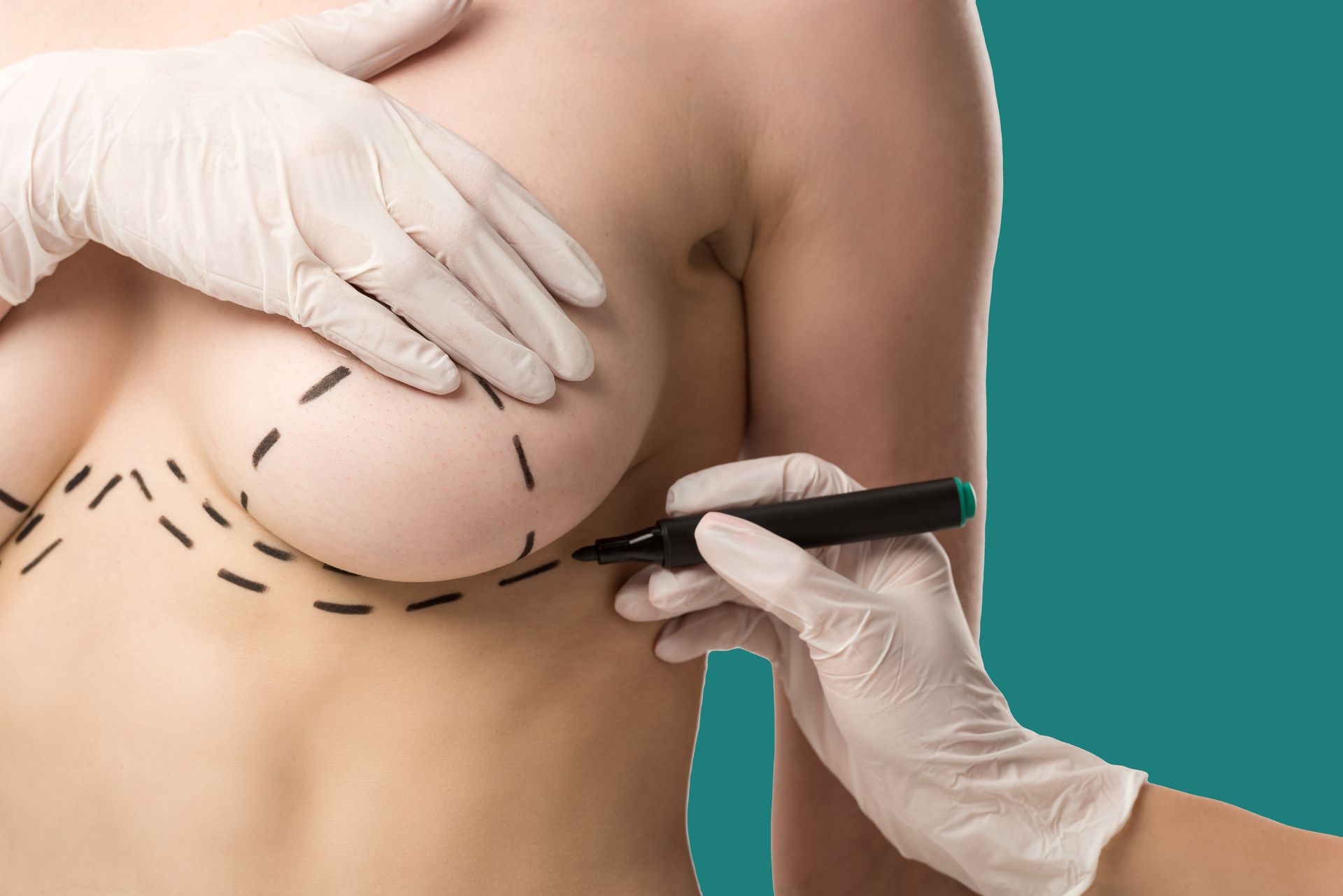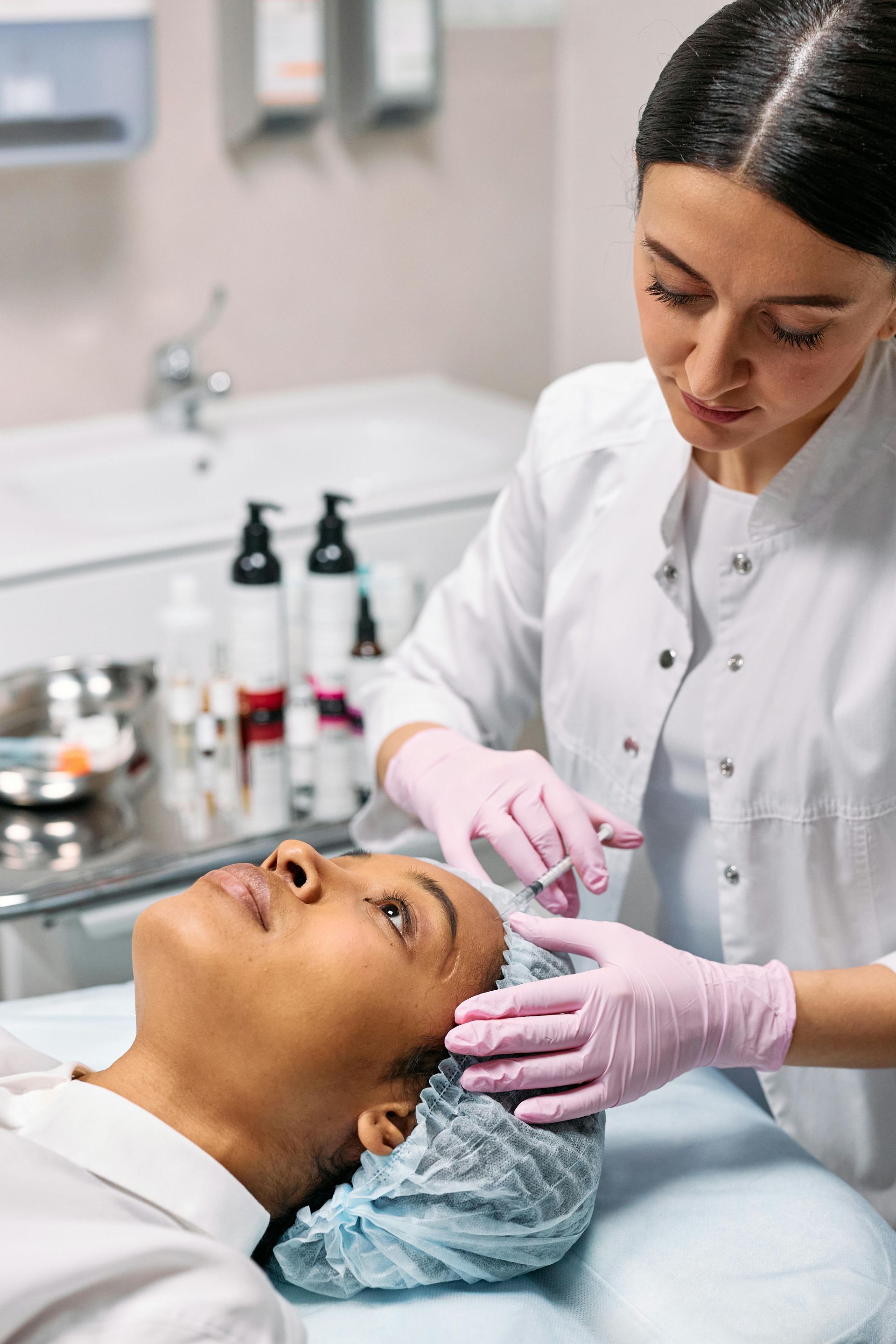Breast augmentation remains one of the most commonly performed plastic surgery procedures, helping women achieve proportions that align with their personal aesthetic goals. Whether you're considering enhancement for the first time or thinking about revision surgery, understanding the key decisions involved in breast augmentation can help you approach your consultation with confidence and clarity.
1. Understanding Your Goals and Expectations
The foundation of successful breast augmentation begins with clearly defining what you hope to achieve. Some women seek fuller, more proportionate breasts that balance their overall figure. Others want to restore volume lost after pregnancy, nursing, or weight changes. Still others desire correction of asymmetry that has affected their confidence.
Your goals should reflect your personal vision rather than attempting to match someone else's results. Body proportions, chest wall dimensions, existing breast tissue, and skin elasticity all influence which surgical approach will achieve optimal outcomes for your specific anatomy. What works beautifully for one patient may not suit another's frame or aesthetic preferences.
During your consultation, be prepared to discuss not just the size you're interested in, but the overall look you hope to achieve. Do you prefer a subtle, proportionate enhancement that others might not immediately notice? Or are you seeking a more dramatic transformation? Understanding your priorities helps your surgeon recommend approaches that align with your vision.

Consider how you want your results to appear in different contexts. The proportions that look appropriate for your daily life, professional environment, and personal style matter just as much as the measurements themselves. An experienced surgeon can help you visualize how different options will integrate with your lifestyle and wardrobe choices.
2. Implant Type, Size, and Profile Selection
Modern breast implants offer numerous options for achieving your desired outcome. Saline implants consist of a silicone shell filled with sterile saltwater solution, while silicone gel implants contain cohesive silicone gel that mimics natural breast tissue more closely. Each type has distinct characteristics that may influence your decision based on your anatomy and preferences.
Implant size involves more complexity than simply choosing a bra cup size. Your surgeon will consider your chest wall dimensions, existing breast tissue, skin elasticity, and body frame when recommending appropriate sizes. Trying on different sizers during your consultation helps you understand how various volumes will look on your specific frame.
Implant profile refers to how much the implant projects forward from the chest wall. Lower profile implants provide a wider, more subtle appearance, while higher profile implants create more forward projection with a narrower base. Your chest width, desired appearance, and existing tissue all factor into which profile works best for your anatomy.
Beyond basic implant characteristics, your surgeon should discuss how different options will age over time. Tissue characteristics, lifestyle factors, and implant properties all influence how results evolve through the years. Understanding these considerations helps you make choices that align with your long-term aesthetic goals.
3. Surgical Approach and Placement Options
The surgical approach for breast augmentation involves several key decisions that affect your results and recovery. Incision location represents one fundamental choice. Inframammary incisions placed in the fold beneath the breast provide excellent access and tend to heal with minimal visible scarring. Periareolar incisions around the lower areola border offer another option, while transaxillary incisions through the armpit avoid breast scarring entirely.
Implant placement significantly impacts the final appearance and how the augmentation integrates with your natural tissue. Submuscular placement positions the implant partially beneath the pectoralis muscle, providing additional soft tissue coverage that can create a more gradual, natural transition. This approach may offer advantages for women with minimal existing breast tissue.

Subglandular placement positions the implant above the pectoralis muscle but beneath the breast tissue. This approach may provide a fuller upper pole appearance and typically involves a shorter recovery period. Your chest anatomy, lifestyle factors including athletic activities, and desired aesthetic outcome all influence which placement works best for your situation.
Dual plane techniques combine elements of both approaches, positioning the implant partially beneath the muscle in the upper pole while allowing it to sit above the muscle in the lower breast. This advanced technique can provide natural upper pole contour while allowing the lower breast to drape more naturally over the implant.
4. Recovery Process and Timeline
Understanding what to expect during recovery helps you prepare both practically and mentally for the healing process. Most patients experience the most significant discomfort during the first few days after surgery, with gradual improvement over the following weeks. Your surgical approach and implant placement affect recovery intensity and duration.
Initial recovery typically requires one to two weeks away from work, depending on your occupation's physical demands. You'll need to avoid strenuous activity, heavy lifting, and vigorous exercise for four to six weeks while your body heals. Most patients can return to light activities and non-strenuous work within a week.
Swelling and bruising peak during the first few days and gradually resolve over several weeks. Your breasts will appear higher and firmer initially, settling into their final position over three to six months as tissues relax and swelling subsides. This settling process is normal and expected, resulting in a more natural appearance once complete.
Following post-operative instructions carefully significantly impacts your healing and final results. Your surgeon will provide specific guidance about garment wear, activity restrictions, and when to resume normal routines. Attending all follow-up appointments allows your surgeon to monitor healing and address any concerns promptly.
5. Long-Term Considerations and Maintenance
Breast implants are not lifetime devices, and understanding long-term maintenance expectations helps you plan appropriately. While modern implants are highly durable, they may eventually require replacement due to normal wear, changes in breast tissue, or personal preference for a different size or type.
Regular self-examinations and routine imaging as recommended by your physician remain important for monitoring breast health after augmentation. Mammograms require special techniques when implants are present, so inform imaging technicians about your implants to ensure proper views are obtained.

Your body continues to change through the years due to aging, weight fluctuations, pregnancy, and hormonal changes. These natural processes affect breast tissue and may influence how your augmentation results evolve over time. Maintaining stable weight and wearing appropriate support helps preserve your results.
Scheduling periodic consultations with your plastic surgeon allows for ongoing assessment of your implants and overall breast health. These check-ins provide opportunities to address any concerns, discuss potential revisions if desired, and ensure your results continue to meet your aesthetic goals.
6. Financial Investment and Value
Breast augmentation represents a significant financial investment in your confidence and well-being. Costs typically include surgeon's fees, facility fees, anesthesia costs, and implant expenses. Additional expenses may include pre-operative testing, special garments, and medications.
Many practices offer financing options that allow you to manage the cost through monthly payments. Companies like CareCredit and Cherry provide healthcare-specific financing with various term lengths and interest rates. Exploring these options during your consultation helps you understand what fits your budget.
When evaluating cost, consider the value of choosing a board-certified plastic surgeon who operates in accredited facilities. The expertise, safety measures, and quality of care provided by qualified professionals significantly impact both your immediate surgical outcome and long-term satisfaction with results.
Some revision procedures may eventually be desired for reasons ranging from implant replacement to size changes reflecting evolving preferences. Understanding that breast augmentation may involve future investments helps you plan comprehensively for the long-term financial aspects of maintaining your results.
Conclusion
Breast augmentation offers women the opportunity to achieve proportions that enhance confidence and align with personal aesthetic goals. Success begins with clearly defining your objectives, understanding the various surgical options available, and selecting a qualified surgeon who can guide you through the decision-making process with expertise and personalized attention.
Taking time to research your options, ask thorough questions during consultations, and ensure you feel comfortable with your surgeon's approach will help you achieve results that enhance your natural proportions and support your confidence. At 5280 Plastic Surgery in Westminster, Dr. John Samas combines board certification with specialized expertise in breast procedures to help patients throughout the Denver area achieve their aesthetic goals. Contact our office to schedule a consultation and begin your journey toward the proportions you've envisioned.




